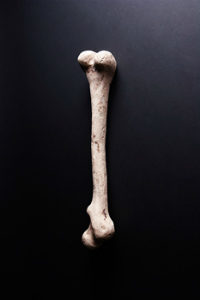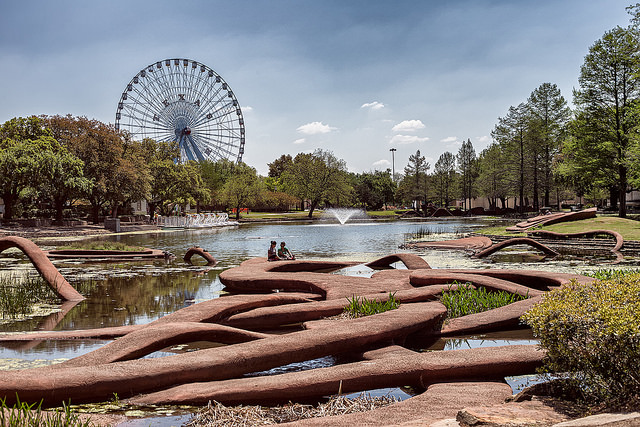
What do Times Square and, say, State Highway 36 in Illinois have in common? If you said absolutely nothing, you’re almost correct. It’s true you can see wobbling people in Muppet costumes, scantly clad cowgirls and 200ft. tall car ads on Broadway. On the other hand, you can see lots of speeding traffic and strip malls on Highway 36. The only thing these places have in common is that they’re both in the public right of way, however one is fragile and the other is anti-fragile.
In Nassim Taleb’s book, “Antifragile: Things That Gain from Disorder (Incerto)” he makes a case for disorder, stress, fragmentation, and variation in our personal lives and in larger economic and political systems. Try to make things too safe, too predictable, and the probability of larger catastrophes increases in the future. Some individuals and systems get stronger the more they’re challenged (bones, entrepreneurs, ancient philosophy), while others break completely (Lehman Brothers, debt financing, bureaucrats). Taleb’s idea isn’t new; the Five Slogans of Machig Labdron in Buddhist teachings advocates getting out of one’s comfort zone and experiencing uncomfortable-ness. Perhaps to both Taleb and Labdron, this may mean teaching yourself snake handling skills if you fear snakes, or even standing in the middle of Times Square and being confronted with the unpredictable theater of street life; a dude in an Elmo costume trying to give you a hug.
On State Highway 36, there’s little unpredictability. Little variation from the constant hum of speeding traffic, big box shops, parking lots, and strip malls. It’s a system engineered from the top down for a single purpose; to move automobiles efficiently. It’s an enormously predictable system, but one built on a house of cards and predicated on cheap gas, cheap suburban mortgages, and massive transportation subsidies from the federal government. Take just one of these things away, and the system collapses. If we look at system performance and design, one wreck and the system also collapses due to a lack of alternate routes and modes. Fragile.
Places which are designed for multiple purposes thrive on disorder. Not only do they have redundancy, but they have anti-fragility. If a massive foreign war should break out and disrupt global oil supplies, $9 per gallon gas would render State Highway 36 useless. Places like New York City would still host cyclists, pedestrians, shops, and excellent transit access though. In fact, all of these systems would see a boost with less automobile traffic clogging the streets and a flock of new residents and commuters who can no longer afford car ownership. Anti-Fragile.
The same concept can be applied on a smaller scale. Project for Public Spaces advocates for multi-purposed public spaces, no matter what their size. This creates complimentary and diverse uses throughout the day. In the morning, yoga. In the afternoon, a food truck outdoor cafe. In the evening, an up and coming singer songwriter trying to be the next Jackson Browne. And should another economic collapse happen, the space will host an Occupy Wall Street camp. The cacophony of uses and modes of a quality public space or complete street brings a qualitative value which can’t be measured in travel time or LOS. A space designed to only be used by corporate employees during their 1/2 hour lunch break would make even Highway 36 seem like an exciting place.
Taleb says artificially imposed peace and order will eventually bite you in the end. I happen to agree. In designing our cities, streets and public spaces, a bit of disorder and redundancy pays dividends. A space like Times Square may not be for everyone, but it has lasting value and adaptability. It also has economic self sufficiency. The cost of maintaining the public infrastructure around Times Square pales in comparison to the amount of revenue the place brings in for the city. On the other hand, top down efficiency is costly. Highway 36 is a financial albatross for nearby municipalities. Perhaps federal funds were used to construct the highway, but road maintenance costs, declining property tax revenue of auto-oriented development, and high transportation costs for residents (car ownership is a prerequisite to participate in these places) negates any financial benefit the road may have in attracting development. If we extrapolate this idea further, almost all auto capacity expansion projects, interstate interchange “upgrades”, and new highways have reached a point of negative return. These projects are extremely fragile and enable a series of negative externalities state DOTs often don’t calculate. Fortunately, the public is catching on. The defeat of Portland’s CRC highway is a sign that the tide is turning against fragile, big budget highway projects.
So next time you’re showing out of town visitors a quality public space or complete street in your city, mention how “anti-fragile” it is and watch their reaction. You’ll be glad you did.

